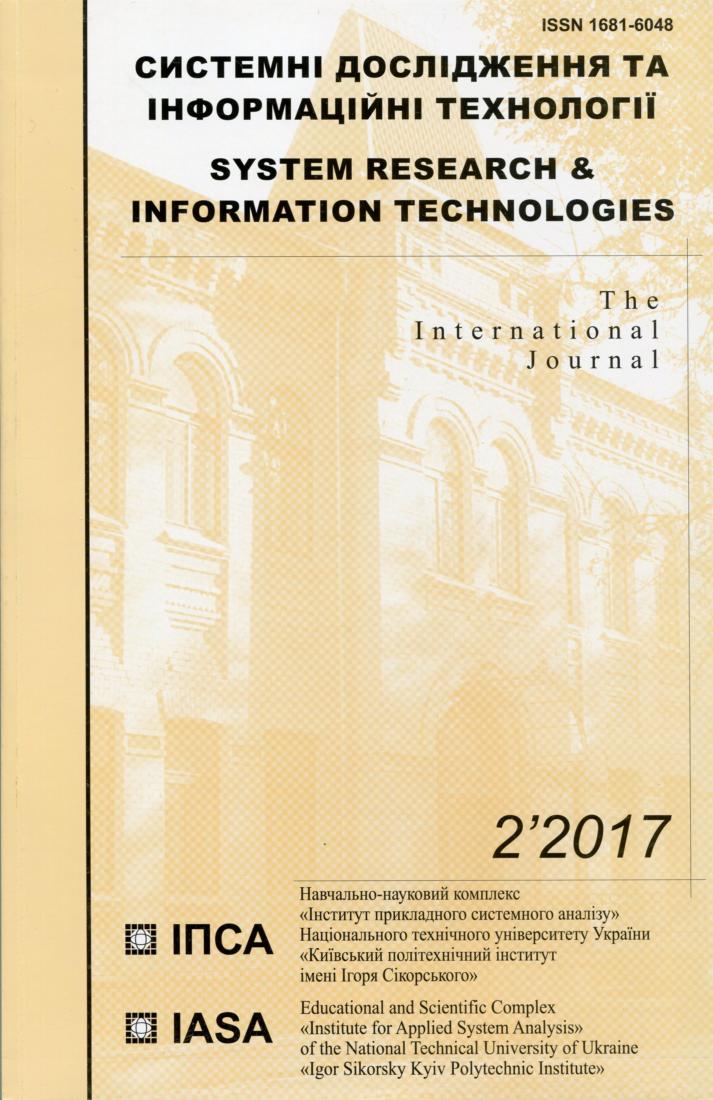Method of choosing an environmental mathematical model
DOI:
https://doi.org/10.20535/SRIT.2308-8893.2017.2.11Keywords:
multiple classifications, artificial neural networks, multivariate adaptive regression splines, multiple determination, estimation of probability, cell, land transformation modelAbstract
In the twenty-first century, the search for approaches to solving environmental problems is caused by the threat to the environment as a result of a variety of human activities, or lack thereof. More than half of the Earth's surface has been altered by people. This modification is called the change of land use. The nonlinearities in changes of land use can be studied with the help of data mining tools. It is proposed to consider the three models for the change of land use: artificial neural networks, methods for solving problems of classification and regression method of building decision trees, and multidimensional adaptive regression splines. Further studies compared the results of three data mining tools.References
Mihajlovic I. Statistical modelling in ecological management using the artificial neural networks (ANNs) / I. Mihajlovic, Đ. Nikolic, N. Strbac and Z. Zivkovic // Serbian Journal of Management. – 2010, No 5 (1). – P. 39–50.
Parslow J. Bayesian learning and predictability in a stochastic nonlinear dynamical model / J. Parslow, N. Cressie, P. Campbell E., E. Jones and L. Murray // Ecological Applications. – 2013. – No 23 (4). – P. 679–698.
Verbeke G. Formal and Informal Model Selection with Incomplete Data / G. Verbeke, G. Molenberghs and C. Beunckens // Statistical Science. – 2008. – Vol. 23, No. 2. – P. 201–218.
Bubna K. Model selection and surface merging in reconstruction algorithms / K. Bubna, C.V. Stewart // Journal Computer Vision and Image Understanding archive. – 2000. – Vol. 80, Issue 2. – P. 215–245.
Sucarrat G. Automated Model Selection in Finance: General-to-Specific Modelling of the Mean, Variance and Density. Oxford bulletin of economics and statistics / G. Sucarrat, A. Escribano // Oxford: Wiley-Blackwell. – 2012. – Vol. 74. – P. 716–735.
Bidjuk P.I. Analiz chasovykh rjadiv : navch. posib. / P.I. Bidjuk, V.D. Romanenko, O.L. Tymoshchuk. – K: NTUU "KPI", 2013. – S. 115–158.
McCullagh P. Generalized Linear Models [Text] / P. McCullagh, J.A. Nelder. – New York: Chapman & Hall, 1990. – 526 p. Doi: 10.1007/978-1-4899-3242-6.
Trukhan S.V. Prohnozuvannja aktual'nykh protsesiv za dopomohoju uzahal'nenykh linijnykh modelej / S.V. Trukhan, P.I. Bidjuk // Naukovi visti NTUU "KPI". – 2014. – № 2. – S. 14–20.
Dovhyj S.O. Systemy pidtrymky pryjnjattja rishen' na osnovi statystychno-jmovirnisnykh metodiv / S.O. Dovhyj, P.I. Bidjuk, O.M. Trofymchuk. – K.: Lohos, 2014. – 419 s.
Tayyebi A. Modeling multiple land use changes using ANN, CART and MARS: Comparing tradeoffs in goodness of fit and explanatory power of data mining tools / A. Tayyebi, Bryan C. Pijanowski // International Journal of Applied Earth Observation and Geoinformation 28 (2014). – P. 102–116.

